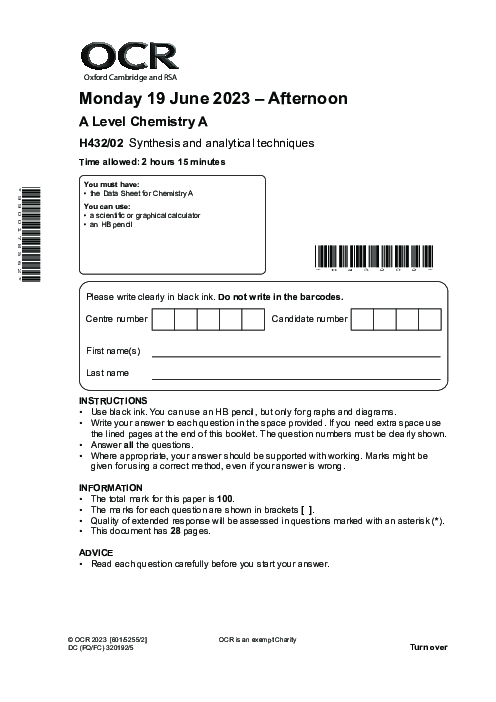Chemistry (A) H432/02 June 2023
omer uner
1. Organic synthesis and mechanisms: electrophilic substitution (nitration of benzene), radical substitution (alkanes + Br₂), hydrolysis of nitriles/esters, synthesis planning with intermediates, functional group interconversion (alkene, alcohol, ester, acid chloride)
2. Analytical techniques: IR spectrum interpretation, proton and carbon NMR peak analysis, mass spectrum fragmentation, 2,4-DNP and Tollens′ reagent selectivity, structural isomer identification via spectroscopy
3. Polymer chemistry and amino acids: condensation polymers with ester and amide linkages, optical isomerism in amino acids and peptides, hydrolysis of peptides, systematic naming of α-amino acids, polymer repeat unit prediction
4. Aromatic compounds and reactivity: salicylic acid reactions with Na₂CO₃, Br₂, acid anhydrides; delocalized π-system evidence; phenol, carboxylic acid functional group reactions
5. Reaction pathways and multistep synthesis: mechanisms (nucleophilic addition to acrolein), flowchart of synthetic steps with reagents and conditions, role of H₂SO₄ catalyst in nitration, identifying compound from spectroscopic data and molecular formula
6. Hydrocarbon and alcohol reactions: boiling point trends, substitution with Br₂, combustion, oxidation of alcohols, dehydration to form alkenes, identification and comparison of alcohol isomers via ¹³C NMR analysis
See More Paper 2 6 months ago
Chemistry A (H432) Subject directory
All resources in one place
Related Past Papers
Related Tutorials
Crash report

